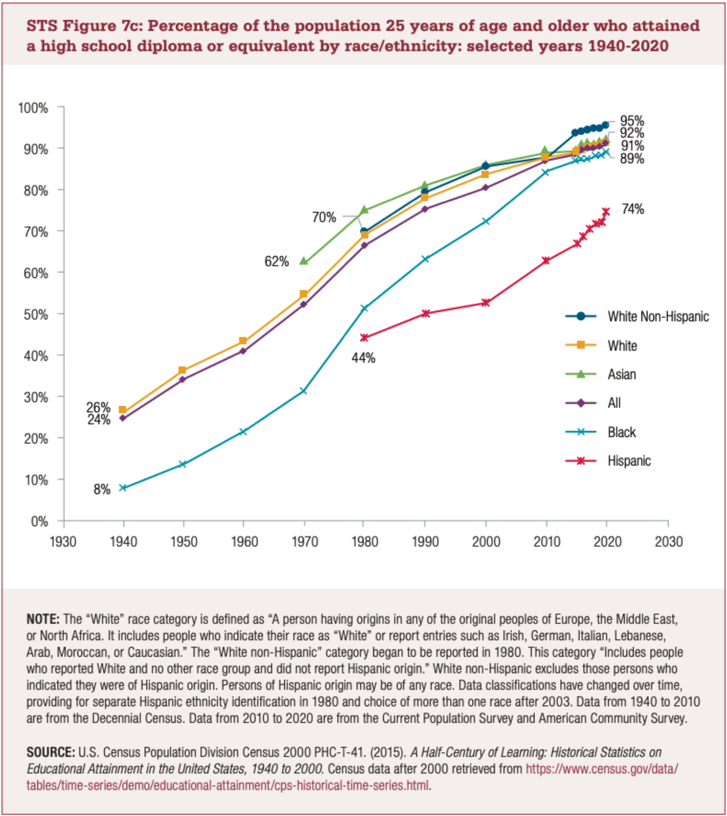Chapter 3, Part 3 — AI & Learning
AI is rapidly reshaping how students learn—offering personalized tutoring and improved access for diverse learners—while also raising new challenges around equity, motivation, and the digital divide.


Chapter 3, Part 3 — Applying AI to Education
AI & Learning
“If I have seen further, it is by standing on the shoulders of Giants.” — Isaac Newton
Already, AI is changing the way students learn in profound ways, and it is unlikely this trend will slow down. EdTech programs already include adaptive learning technology that purports to present the most relevant material more efficiently to individual students according to what they know and still need to master; ChatGPT is already available to anyone with a device connected to Wi-Fi. At the same time, overreliance on AI by learners has the potential to demotivate learners from tackling the rigors required for knowledge acquisition (such as critical thinking and problem-solving skills), resulting in negative effects on learning outcomes (Carstens et al., 2021).
Enhanced Accessibility to Learning Opportunities for All Students
AI can make learning itself far more accessible to all learners, such as neurodiverse students or other students who have learning challenges by using AI-enhanced technology in a wide variety of ways that hitherto have not been possible (U.S. Department of Education, 2023). For example, AI’s ability to instantly translate text could make learning more accessible for ELLs as they can follow along in class without having to worry about the language barrier, while falling further and further behind. In addition, AI’s ability to decipher video has led to the idea of a live translation of sign language, which could help deaf kids communicate in class, as AI can mediate a discussion between the deaf by deciphering sign language and also by turning speech-to-text for the deaf to read. Although not tested extensively, so far these sign language interpreting tools have shown promising results (Papastratis et al., 2021).
In addition, with more information about the students themselves, teachers and AI systems will be further able to adapt the instruction to help neurodiverse learners (U.S. Department of Education, 2023). Non-trivial considerations may include: 1) that these different ways of teaching have to be to the same standard as the other ways of teaching; and 2) answering the question of “How much data should the systems be allowed to have?” Too little and they will not work well, and too much might be a privacy issue (U.S. Department of Education, 2023).
Mitigating Equity Gaps — Intelligent Tutoring Systems
The equity divide in our educational system is well-established (U.S. Department of Education, 2023; Carnevale et al., 2019). Wealthier families can afford to send their children to private schools with smaller class sizes and more educational resources, while lower-income families don’t have that luxury. While there are many good public schools, public schools in lower-income areas usually receive less funding than those in wealthier neighborhoods, leading to lower test scores and higher absenteeism. One example of this is in Connecticut, where the wealthier town of Greenwich spent on average $6,000 more per student than Bridgeport, a school district a little more than 30 miles away. When the test scores were measured, Bridgeport’s average was 59.3 percent while Greenwich’s school district scored 89.3 percent (Semuels, 2021).
AI technology presents a promising avenue to mitigate the educational inequality gap existing between rich and poor communities. If used well, one of the ways AI can accomplish this is through a vision touted by Sam Altman and Sal Khan, who were early supporters of Intelligent Tutoring Systems (ITS): the idea of each student having their own personalized tutor (Khan, 2023; Huddleston, 2024). Compared to other computer-based instructional programs, this personalized tutoring system has been shown to be highly effective.


Figure 5: Percentage of Population 25 Years or Older who Attained A Highschool Diploma or Equivalent by Race/Ethnicity: Selected Year 1940-2020 (Kochmar et al., 2022).
While higher-income families have access to tutors to help with everything from homework to standardized tests, poorer students from lower-income families don’t have access to those same resources, thereby creating a substantial gap in educational equity (Cahalan et al., 2022; Carnevale et al., 2019). In addition, parents of middle and upper-middle-class students have more time and/or resources to support their children’s education (American Psychological Association, 2017). These parents typically have a better education themselves and can therefore help their students with their studies and facilitate their understanding of more advanced topics (Carnevale et al., 2019). This income and class-based advantage, which begins almost at birth, gives students from wealthier families a head start and has a compounding effect down the road (Carnevale et al., 2019).
Further, schools in higher-income areas are better resourced, with more highly educated teachers opting to teach there rather than in lower-income areas, further giving students from higher-income areas even more of an advantage (Carnevale et al., 2019). Because they get more support and confidence in reading early on, students from higher-income areas come to school with a more robust vocabulary and can learn to read more quickly, which leads to a better understanding of test questions and more accelerated learning in general (James, 2022).
In theory, anybody with a computer would have access to these envisioned AI tutors at a much more affordable rate than a human tutor. EdTech companies like Khan Academy have made significant strides in creating online resources for students and are now indicating that personalized AI tutors are within reach (Code.org, 2023). Sal Khan, founder of Khan Academy, shares a vision similar to Altman’s: “Through AI, everyone could access a low-cost, personalized tutor” (Code.org, 2023). As a pioneer in one of the largest EdTech companies in the world, a version of this vision is likely to come true, although how effective the AI tutor will ultimately prove to be is still unknown.
Should the effectiveness of AI tutors be demonstrated, the prospects of these personalized tutors are extremely exciting because they would theoretically get to know a student’s strengths and weaknesses and, over time, even be able to present information in ways that are easiest for the individual user to understand—perhaps even using some of the user’s interests to explain problems. A low-cost, accessible AI tutor, if successful, would aid in bridging the gap between students with different financial situations and help level the educational playing field. All the students would need is a computer or a smartphone.
However, the integration of AI in education, while promising transformative benefits, also presents significant challenges that must be addressed to ensure an effective and equitable implementation. While the prospect of a personalized AI tutor has the potential to bridge the educational gap between the rich and poor, students who don’t have access to computers are at a greater risk of falling even further behind—leaving students without access to reliable internet or modern computer technology at an incredible disadvantage. Currently, in the U.S., 93 percent of 3- to 18-year-olds have access to the internet through a computer at home (National Center for Education Statistics, 2023). According to a United Nations report released in 2021, 37 percent of the world does not have access to the internet. These people would be especially vulnerable in a world where AI is able to accelerate learning if the “digital divide” isn’t bridged.
Effects of Motivation on Students' Learning Through AI Systems
One of the primary challenges with AI-driven education is that it relies more on the internal motivation of the student to learn (Kolchenko, 2018). Educational AI systems often require consistent and accurate input to tailor learning experiences effectively and are usually more generalized at the beginning. However, not all students are equally motivated. Therefore, those with lower motivation may provide less data, leading these AI machines to be less useful, targeted, and capable (Kolchenko, 2018). This can create a vicious cycle where unmotivated students receive less beneficial AI support, further diminishing their engagement and progress, while the more motivated children who provide more data will have a better teaching system (Kolchenko, 2018).
Another similar issue that might further affect the inputs fed into the AI system is student impatience. When students become impatient or frustrated, they might randomly click answers, leading AI algorithms to develop a skewed understanding of their abilities. This misinterpretation can result in the provision of learning materials that don’t match the student’s needs, exacerbating their frustration and disengagement (Emara et al., 2023). This creates a positive feedback loop where students grow increasingly frustrated, and the AI develops an increasingly distorted perception of their actual knowledge, which leads the AI to stray further away from the student's zone of proximal development (Murray & Arroyo, 2002).
Perils of AI in Learning: Potential for AI to Stunt Learning
The integration of AI in our existing educational system, while promising transformative benefits, also presents significant challenges that will likely need to be addressed to ensure an effective and equitable implementation. (Key concerns addressed in greater detail in Chapter 5 include the reliance on student motivation for effective AI learning as teachers and their in-person encouragement may take more of a “back seat.”)
Finally, to ensure equitable access to effective educational tools facilitated by AI, we will need to close the “digital divide” that separates students with access to the internet from those who do not. The opportunities and implications are all something that needs to be addressed for AI to have its optimal impact on creating an enriching educational experience for all learners.
References
American Psychological Association. (2017). Education and socioeconomic status. https://www.apa.org/pi/ses/resources/publications/education
Cahalan, M. W., Addison, M., Brunt, N., Patel, P. R., Vaughan III, T., Genao, A., & Perna, L. W. (2022). Indicators of higher education equity in the United States: 2022 historical trend report. Pell Institute for the Study of Opportunity in Higher Education.
Carnevale, A. P., Fasules, M. L., Quinn, M. C., & Campbell, K. P. (2019). Born to win, schooled to lose. Georgetown University Center on Education and the Workforce. https://files.eric.ed.gov/fulltext/ED599947.pdf
Carstens, K. J., Mallon, J. M., Bataineh, M., & Al-Bataineh, A. (2021). Effects of technology on student learning. The Turkish Online Journal of Educational Technology, 20(1).
Code.org. (2023). AI 101 for teachers. https://www.code.org/ai
Emara, N., Ali, N., & Abu Khurma, O. (2023). Adaptive learning framework (Alef) in UAE public schools from the parents’ perspective. Social Sciences, 12(5), 297. https://www.mdpi.com/2076-0760/12/5/297
Huddleston, T. (2024, January 17). ChatGPT is best for people in these industries: OpenAI CEO Sam Altman. CNBC. https://www.cnbc.com/2024/01/17/chatgpt-is-best-for-people-in-these-industries-openai-ceo-sam-altman.html
James, S. (2022, November). Benefits of starting reading early. Nationwide Children’s Hospital. https://www.nationwidechildrens.org/family-resources-education/700childrens/2022/11/benefits-of-starting-reading
Khan, S. (2023, May 1). How AI could save (not destroy) education [Video]. TED. https://www.youtube.com/watch?v=hJP5GqnTrNo
Kolchenko, V. (2018). Can modern AI replace teachers? Not so fast! Artificial intelligence and adaptive learning: Personalized education in the AI age. HAPS Educator, 22(3), 249–252.
Luckin, R., Cukurova, M., Kent, C., & du Boulay, B. (2022). Empowering educators to be AI-ready. Computers and Education: Artificial Intelligence, 3, 100076. https://doi.org/10.1016/j.caeai.2022.100076
Murray, T., & Arroyo, I. (2002). Toward measuring and maintaining the zone of proximal development in adaptive instructional systems. In Intelligent Tutoring Systems (pp. 749–758).
National Center for Education Statistics. (2023). Children’s internet access at home. U.S. Department of Education, Institute of Education Sciences. https://nces.ed.gov/programs/coe/indicator/cch
Papastratis, I., Chatzikonstantinou, C., Konstantinidis, D., Dimitropoulos, K., & Daras, P. (2021). Artificial intelligence technologies for sign language. Sensors, 21(17), 5843. https://doi.org/10.3390/s21175843
Semuels, A. (2021, June 13). Good school, rich school; bad school, poor school. The Atlantic. https://www.theatlantic.com/business/archive/2016/08/property-taxes-and-inequality/497912/
U.S. Department of Education. (2023). Artificial intelligence and the future of teaching and learning: Insights and recommendations. Office of Educational Technology. https://www.ed.gov